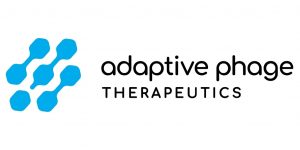
Vita Therapeutics Raises $31 Million, Adds New Muscular Dystrophy Asset
A little more than 12 months after Vita Therapeutics raised $32 million in financing, the Baltimore-based company secured an additional $31 million to support the advancement of its lead muscular dystrophy asset.
Vita Therapeutics raised the Series B financing to help move its lead cell therapy asset, VTA-100, into the clinic as a potential treatment for limb-girdle muscular dystrophy 2A (LGMD2A), a subtype of the disease. LGMD2A is a localized form of the disease that typically impacts the shoulders, upper arms, pelvic area and thighs. The company uses induced pluripotent stem cell (iPSC) technology to engineer specific cell types designed to replace those that are defective in patients.
Chief Executive Officer Douglas Falk told BioBuzz VTA-100 is expected to enter first in-human studies in about 18 months. VTA-100 is an autologous treatment that combines gene correction and iPSC technology to help repair and replace muscle cells for people with LGMD2A. The company is currently conducting studies to support its planned Investigational New Drug Application, Falk said.
“Right now, our biggest goal is to get this into the clinic so we can bring new help to patients,” Falk said.
Beyond VTA-100, the Series B enables Vita Therapeutics to secure a new asset for the treatment of patients with facioscapulohumeral muscular dystrophy (FSHD). VTA-120 is designed to be an autologous treatment that combines gene correction and iPSC technology to help repair and replace muscle cells for the treatment of FSHD, which like LGMD2A is a localized form of the disease. The second program uses the same technology as VTA-100, Falk said.
Falk noted that FSHD has a similar phenotype perspective to LGMD2A. Typically, FSHD first presents with facial muscle weakness and in the scapular region. Additionally, there is proximal weakness of the pectoral and abductor muscles, which limits upper extremity function at the shoulder.
Both VTA-100 and VTA-200 are designed to not only correct the genetic defect for muscular dystrophy but to also regenerate muscle in patients who have seen their muscles waste away due to the disease.
The company also has a third developmental program, VTA-300. This asset is an investigational immunotherapy designed to combine proprietary chimeric antigen receptor technology and gene editing. Vita intends to develop this asset for an undisclosed indication.
Since the company’s Series A in 2021, Falk said Vita Therapeutics has made significant progress. It has scaled from four employees to about 30 in the last 14 months and Falk said there are plans to bring on an additional 10 or so as it gets closer to the time VTA-100 will enter Phase 1.
Beyond the expansion of its headcount, Vita has also grown physically. In May, the company secured about 11,000 square feet of office space and lab space in the University of Maryland BioPark. The new space allowed the company to significantly focus on the development of its pipeline, Falk said. It also placed the Vita team in close proximity to the University of Maryland research facilities.
However, as the company continues to scale, Falk said Vita Therapeutics will begin to look for additional space. He said efforts are underway to find another facility to operate. While no lease has been signed, Falk said the company is committed to remaining in Maryland.
With the combined Series A and B raises and additional funding, Vita Therapeutics has raised a total of $66 million to support its programs. The Series B was led by Cambrian BioPharma and new investor Solve FSHD. New investors included Riptide Ventures and Cedars Sinai, which participated alongside TEDCO and other existing investors.
Falk said the capital organizations and companies that have continued to show support for Vita validates Vita’s cell therapy platform that targets the root cause of disease.
“People have seen the progress we’ve made as well as some of the data we’ve generated internally and they continued to be impressed with what we’re doing,” Falk said.
With the new financing in hand, Falk said the company will knuckle in and focus on the immediate tasks at hand so they can potentially bring new treatment options to muscular dystrophy patients.





